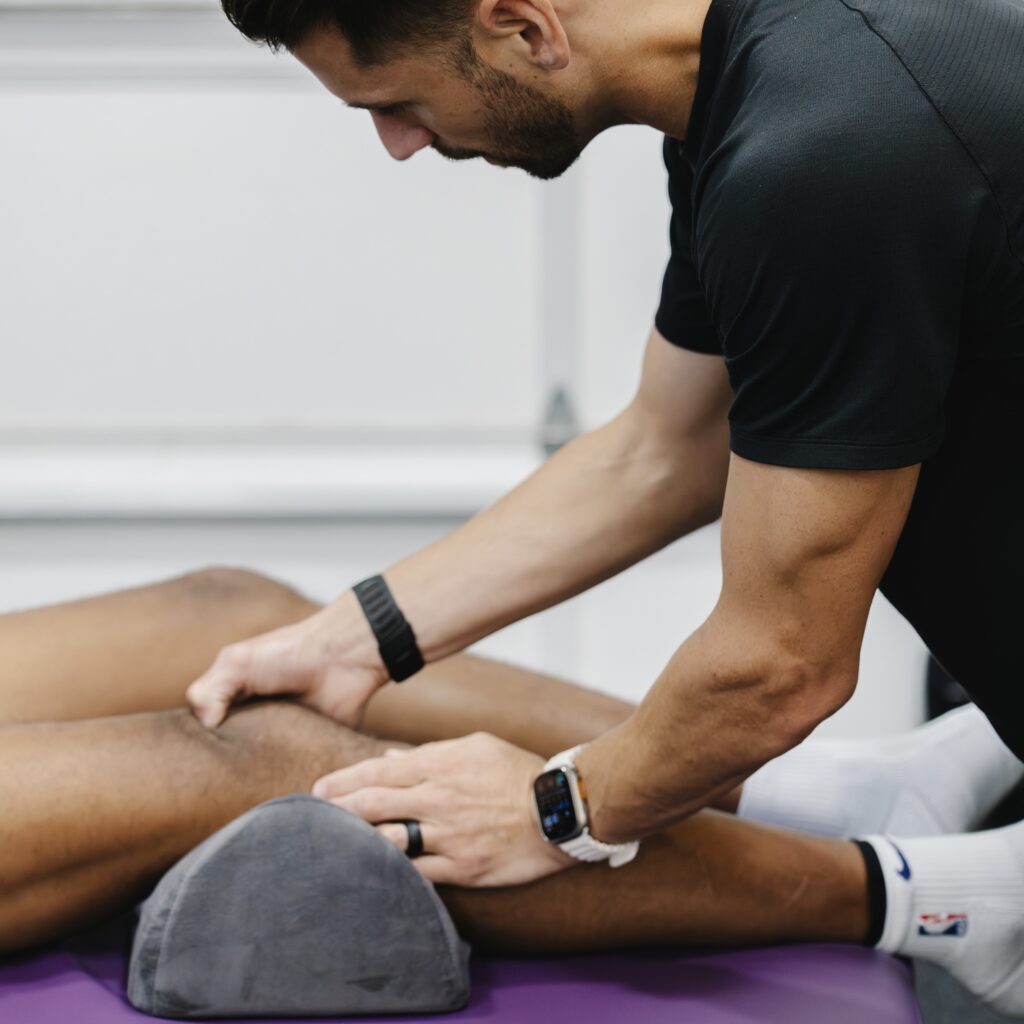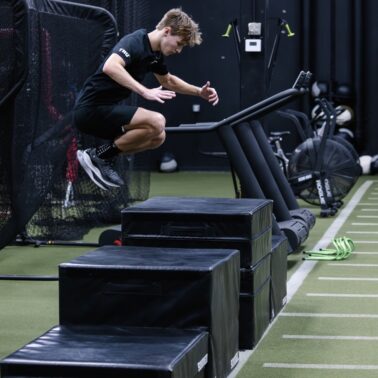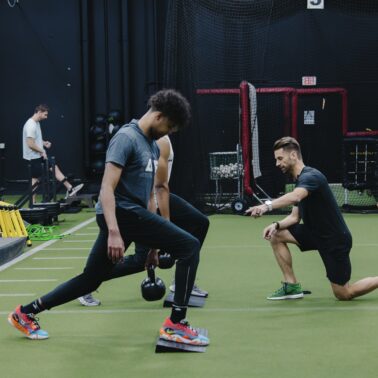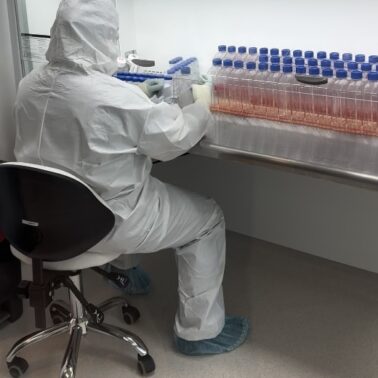Approximate Read Time: 7 minutes
“Stem cell outcomes aren’t just about what you inject—they’re about how you protect the cell environment while it takes root.”
What You Will Learn
- Why early post-procedure care favors homeostasis over “biohacks.”
- How heat/sauna and “thermic stress” may influence mesenchymal cells.
- How to phase loading and recovery with joint-specific examples.
DISCLAIMER: This article reflects my personal perspective and experience. Anyone undergoing stem cell therapy should consult their physician and/or team administering their treatment.
Why Homeostasis Comes First
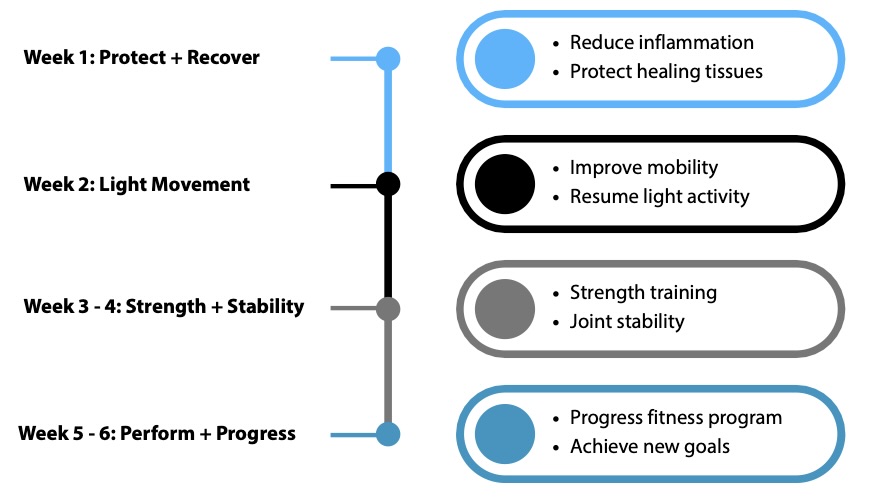
Stem cell therapy creates a unique opportunity for healing, but the early recovery environment can influence outcomes. My perspective is simple: in the first few weeks, prioritize homeostasis, minimize extremes, and avoid stacking stressors that could disrupt the cellular environment. One of the primary mechanisms behind stem cell therapy is immune-modulation. More simply, lower stress to allow healing to occur.
Why add more stress and inflammation if the purpose of stem cell therapy is to minimize it?
My recommendations for the spine, knee, shoulder, and hip all emphasize gentle mobility, controlled loading, and patience in the first 2–3 weeks while minimizing hyperbaric oxygen therapy (HBOT), sauna/cold plunges, deep manual therapy, dry needling, and blood flow restriction (BFR). These inputs are valuable tools but are best introduced later, once tissue tolerance improves.
This article looks to explore popular modalities that therapists, coaches, and clients ask me if they are “safe to use” following stem cell therapy. How I became interested in stem cell therapy is centered on this exact problem – one that does not have a clear solution to what the “best” protocol is following stem cells.
NOTE: In this article I integrate ideas from available research and my understanding of physiology. I struggle to find clear, precise answers to some of these specific questions surrounding integration of modalities. Sometimes the evidence is not as clear nor has the research caught up to modern day questions.
HBOT: Timing and Adaptation
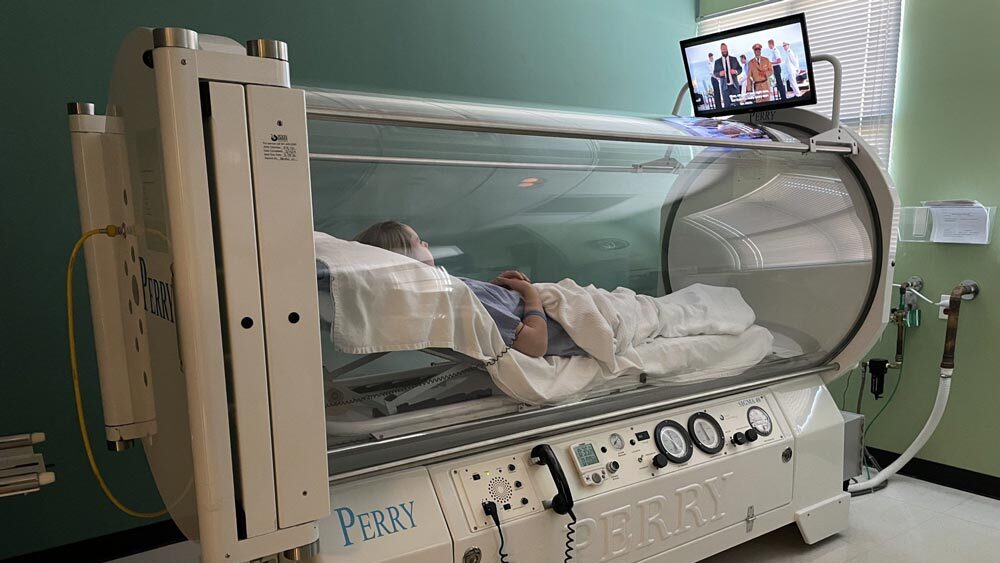
The literature suggests Hyberbaric Oxygen Therapy (HBOT) is a double-edged sword depending on dose and timing. Short courses of HBOT (1–5 sessions) have been shown to reduce mitochondrial efficiency and increase oxidative stress, while longer, structured blocks (20–60 sessions) can improve antioxidant defenses and enhance mitochondrial function through hormesis (Schottlender et al., 2021). Hormesis is the phenomenon where a low to moderate dose of a potentially harmful stressor can provide enough of a stimulus to create positive adaptation.
I have had conversations with physicians who support the use of HBOT immediately following stem cell therapy and other physicians who advise delaying for 1-2 weeks. There seems to be evidence to support either way, which makes the inclusion of this modality highly dependent on the medical team administering the stem cells.
My takeaway: HBOT is not inherently harmful or beneficial. It is a powerful input that should be timed appropriately. In the first two weeks, when stem cells are engaging in paracrine signaling and immune modulation, I believe in minimizing added systemic stress. HBOT could potentially create that low level stress. Later, if your physician prescribes a structured program, HBOT may support recovery.
Heat and Sauna: Thermic Stress on stem Cells
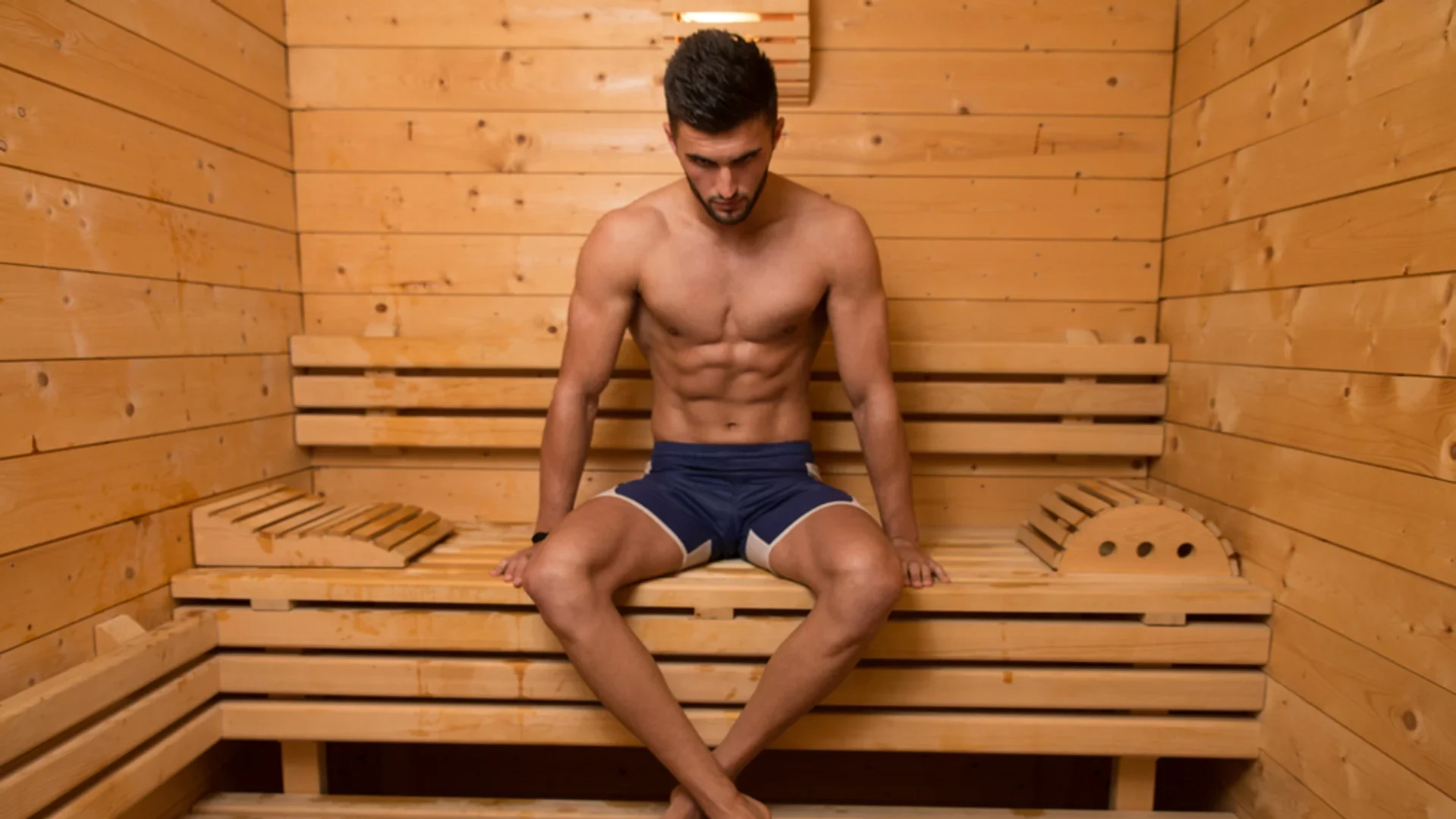
Sauna and deliberate heat exposure have become popular recovery tools, but we may want to caution sauna use immediately after stem cell injections. In vitro studies demonstrate that mesenchymal stem cells exposed to 40–42 °C for one hour show reduced survival, increased cell death, and diminished differentiation potential (Rühle et al., 2020). While heat stress triggers protective heat shock proteins, these were not sufficient to fully preserve function.
Normal body temperature is 37 °C and during sauna exposure the internal body temperature may rise 0.7 – 1.2 °C. On the extreme end, the internal body temperature may get just above 38 °C, but no where close to the 40-42 °C. Lab experiments do not always translate to in-human practicality.
My takeaway: stem cells are thermosensitive in vitro (lab experiment). Early after injections, avoiding sauna or heat extremes could reduce a “relative risk,” albeit not clearly supported in vivo (living human). As recovery progresses, gradual heat exposure can be reintroduced as a systemic training stressor, but it should be treated like exercise — something that is dosed and progressed, not introduced aggressively.
Cupping and Dry Needling: Dose and Timing
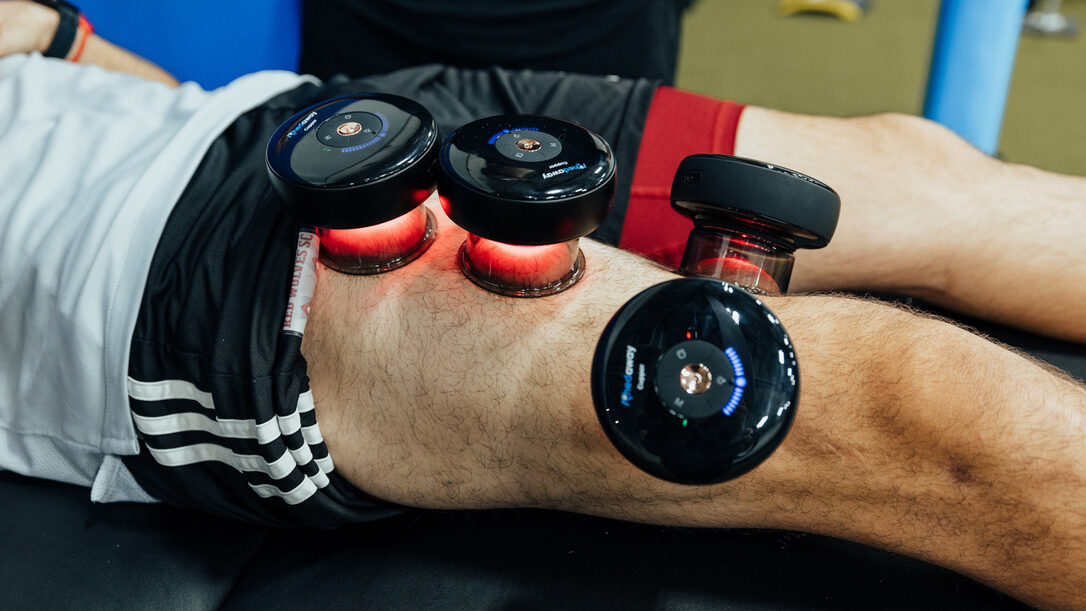
Gentle manual therapy can support mobility and pain relief during early recovery. Aggressive tissue manipulation such as cupping or dry needling is something I do not recommend early after stem cell injections.
Research on dry needling highlights its capacity to initiates an acute inflammatory response, especially when multiple local twitch responses are elicited (Dommerholt et al, 2020). Cupping likewise can induce an acute inflammatory response before it provides it’s anti-inflammatory benefits (Widada, 2017).
My takeaway: In the early window (0–2 weeks), stick with light manual inputs for comfort and motion hygiene. Cupping and dry needling designed to provoke inflammation should be avoided. In weeks 3–6, selective use of these tools can be considered and always paired with appropriate loading to consolidate gains.
Why Blood Flow Restriction Should Wait
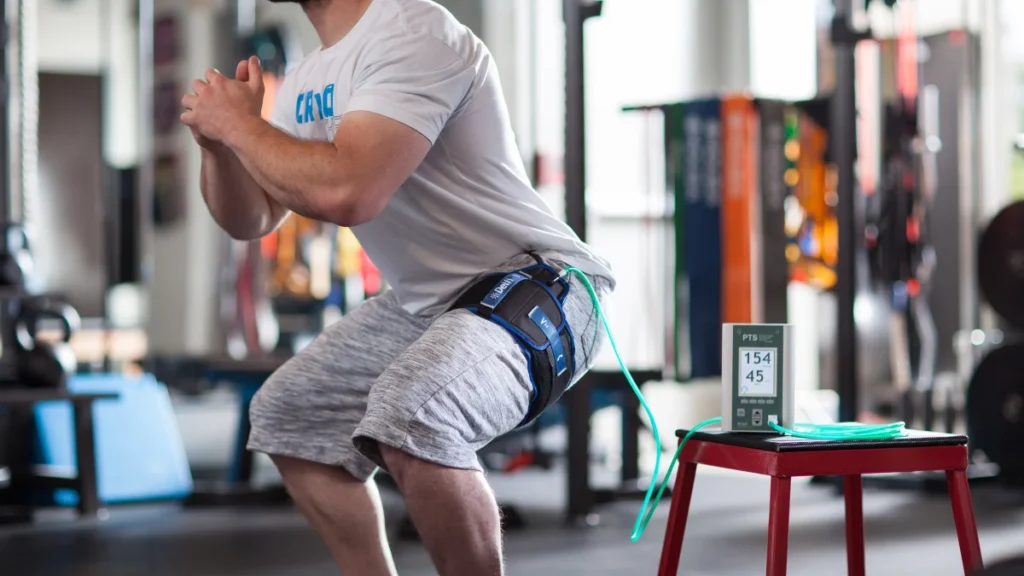
Blood flow restriction (BFR) training has become a popular tool in rehab and training because it allows for muscle hypertrophy and strength gains at very low external loads. By inflating a cuff around the limb, arterial inflow is reduced and venous return is largely occluded, creating a hypoxic, metabolically stressful environment within the muscle (Mattocks et al., 2018).
That same physiology is why BFR should be avoided in the first two weeks following a stem cell injection. BFR rapidly elevates metabolic byproducts, increases local inflammation, and produces hormonal and vascular responses that may disrupt the homeostasis required for stem cells to engraft and signal effectively.
Later in the recovery timeline, once tissue loading capacity is restored and systemic inflammation has stabilized, BFR may be reconsidered as part of a structured strengthening plan. But in the early phase, it is more prudent to focus on gentle mobility, low-intensity walking or cycling, and isometric activation rather than metabolic stressors.
My takeaway: Early after stem cell therapy, the goal is to protect the new cellular environment and reduce systemic stress. BFR elevates metabolic byproducts and increases local inflammation that may disrupt homeostasis. Hold off on BFR training until later in the recovery at the 3-4 week timeline to avoid this metabolic stress.
A Phased Approach to Recovery
Overall, there is no exact science to what the protocol should be following stem cell therapy. Similar to other rehab plans or post-surgery recovery, stem cell recovery follows general guidelines rooted in science and research. Below is a sample of what that may look like based on the topics discussed from above.
- Phase 1 (Days 1–7): Reduce inflammation and protect the joint. Gentle mobility, supported sleep, light walking or biking. Avoid extremes like HBOT, sauna, BFR, or aggressive manual therapy.
- Phase 2 (Days 8–14): Introduce light, controlled movement. Low-effort partial squats for the knee, isometrics for the shoulder, core activation for the spine and hip injections.
- Phase 3 (Weeks 3–4): Build stability and strength at moderate effort (~5/10). Begin loading patterns with sub-maximal weight partial ranges to tolerance.
- Phase 4 (Weeks 5–6): Resume more robust exercise (~7/10 effort), introduce light running or overhead pressing depending on the joint, and reintroduce modalities progressively if cleared by your physician.
Supplements and Lifestyle
If the overall goal is to support a healthy immune system without disrupting homeostasis, then nutrition and supplements can be supportive to that. I believe in a whole foods diet that offers the body diversity that can provide the basic micro- and macronutrients to support overall health. Below are additional supplements that I believe can be valuable in supporting general health:
- Omega-3 fatty acids (2–3 g/day): reduce systemic inflammation.
- Creatine monohydrate (5 g/day): supports cellular energy.
- Whey protein (30–40 g/day): provides amino acids for tissue repair.
- Curcumin (1 g/day): a natural anti-inflammatory.
- Tart cherry juice (8 oz/2x day): supports restorative sleep through antioxidants.
Protect the Investment
Stem cell therapy is an investment in healing. Protect that investment by favoring progressive loading, minimizing extreme conditions early, and reintroducing modalities strategically once tissue and systemic stability improve. The injection or IV is only the beginning — what you do in the days and weeks afterward determines how well stem cells perform.
Read More Like This
Related Podcasts
References
Antonio, J., Candow, D., Forbes, S., Gualano, B., Jagim, A., Kreider, R., Rawson, E., Smith‐Ryan, A., VanDusseldorp, T., Willoughby, D., & Ziegenfuss, T. (2021). Common questions and misconceptions about creatine supplementation: what does the scientific evidence really show?. Journal of the International Society of Sports Nutrition, 18.
Zhang, X., Ritonja, J., Zhou, N., Chen, B., & Li, X. (2022). Omega‐3 Polyunsaturated Fatty Acids Intake and Blood Pressure: A Dose‐Response Meta‐Analysis of Randomized Controlled Trials. Journal of the American Heart Association: Cardiovascular and Cerebrovascular Disease, 11.
Fernández-Lázaro, D., Mielgo-Ayuso, J., Calvo, S., Martínez, C., García, A., & Fernandez-Lázaro, C. (2020). Modulation of Exercise-Induced Muscle Damage, Inflammation, and Oxidative Markers by Curcumin Supplementation in a Physically Active Population: A Systematic Review. Nutrients, 12.
Losso, J., Finley, J., Karki, N., Liu, A., Prudente, A., Tipton, R., Yu, Y., & Greenway, F. (2017). Pilot Study of the Tart Cherry Juice for the Treatment of Insomnia and Investigation of Mechanisms. American Journal of Therapeutics, 25, e194–e201.
Dejmek, J., Kohoutová, M., Kripnerová, M., Čedíková, M., Tůma, Z., Babuška, V., Bolek, L., & Kuncová, J. (2018). Repeated exposure to hyperbaric hyperoxia affects mitochondrial functions of lung fibroblasts. Physiological Research, 67(Suppl. 4), S633–S643.
Rühle, A., Thomsen, A., Saffrich, R., Voglstätter, M., Bieber, B., Sprave, T., Wuchter, P., Vaupel, P., Huber, P. E., Grosu, A. L., & Nicolay, N. H. (2020). Multipotent mesenchymal stromal cells are sensitive to thermic stress – potential implications for therapeutic hyperthermia. International Journal of Hyperthermia, 37(1), 430–441.
Schottlender, N., Gottfried, I., & Ashery, U. (2021). Hyperbaric oxygen treatment: Effects on mitochondrial function and oxidative stress. Biomolecules, 11(12), 1827.
Widada, W. (2017). The Wet Cupping Therapy Stimulates Inflammatory Responses. . https://doi.org/10.2991/ichlas-17.2017.11.
